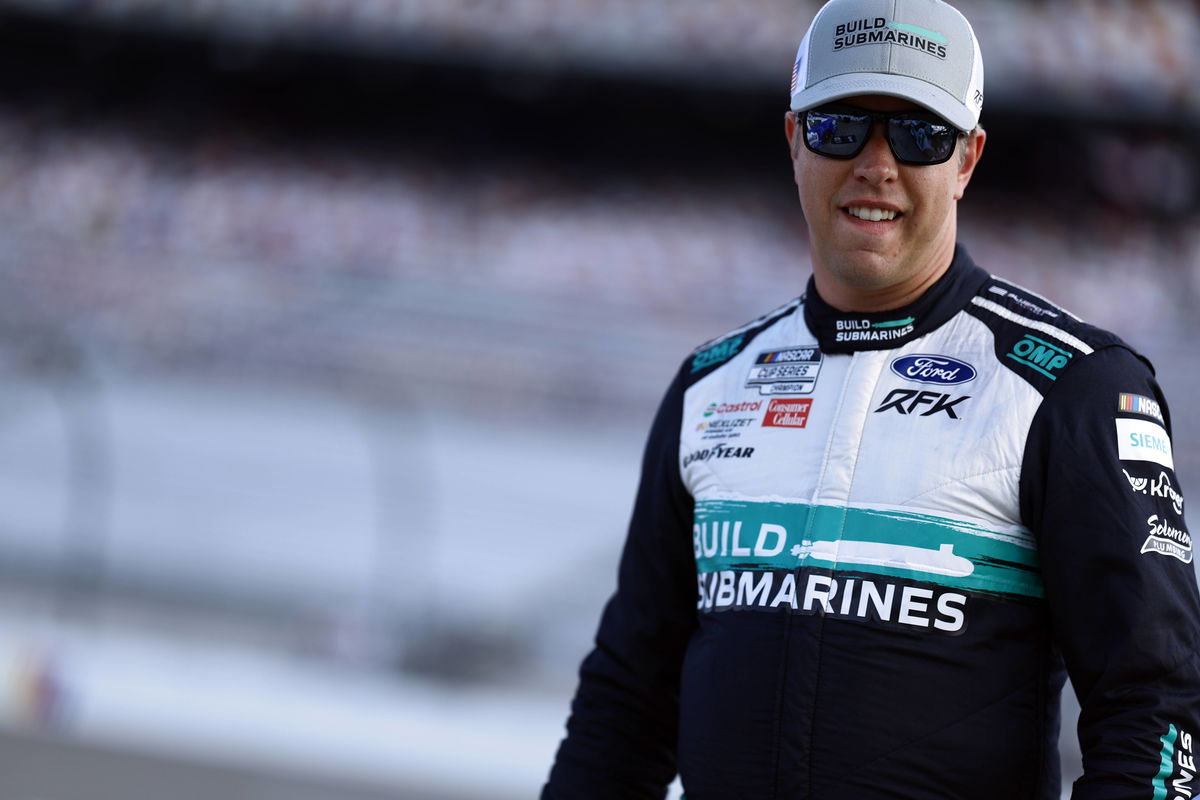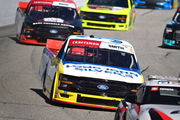
Imago
August 15, 2025, Richmond, Va, USA: Richmond, VA USA – August 15, 2025: NASCAR, Motorsport, USA Cup Series driver, BRAD KESELOWSKI 6 of Rochester Hills, MI gets ready to practice for the Cook Out 400 in Richmond, VA. Richmond USA – ZUMAa161 20250815_aaa_a161_009 Copyright: xWalterxG.xArcexSr.x

Imago
August 15, 2025, Richmond, Va, USA: Richmond, VA USA – August 15, 2025: NASCAR, Motorsport, USA Cup Series driver, BRAD KESELOWSKI 6 of Rochester Hills, MI gets ready to practice for the Cook Out 400 in Richmond, VA. Richmond USA – ZUMAa161 20250815_aaa_a161_009 Copyright: xWalterxG.xArcexSr.x
NASCAR is not criticism-deficient right now, facing scrutiny from all directions. Some question the playoff structure, some challenge the schedule. But the issue topping the list is the Next Gen. Since its arrival in 2022, fans and drivers alike have criticized it for a lot of factors, like inducing more parity and reducing horsepower. But is Next Gen really the root cause?
Watch What’s Trending Now!
RFK Racing’s No. 6 driver-owner Brad Keselowski doesn’t feel so. In conversation with Skip Flores on Stacking Pennies, the #6 driver exposed an eye-opening reality about the OEM (Original Equipment Manufacturers) problems that go beyond the Next Gen, ultimately affecting the sport’s competitive edge.
ADVERTISEMENT
Keselowski uncovers bitter OEM reality
The topic started with a Next Gen question by Skip Flores, when he asked if they make it easier or harder to get the right tools. Keselowski responded that the Next Gen has made it easier, but what’s made it harder is the lack of practice and schedule changes that keep happening.
He then went on to expose the monopoly practiced by the OEMs (Chevrolet, Toyota, Ford), saying, “Right now, the OEMs have full control over all the major systems of data. If you want to put a car in the wind tunnel, you have to get OEM approval because they have a limited hour structure. If you want to test the OEM has to pick who goes to the track test. You want data on how tyres work to feed your simulation, it has to come through the OEM.”
This first uncovers the OEMs’ grip over such top-level crucial, and basic aspects like access to systems and data for performance evaluation. Any technical adjustment or demand, you name it, and it passes through the OEMs. But has this always been the case?
ADVERTISEMENT
“Before, the dynamics were such to where, you had practice, testing, if you didn’t get what you needed from an OEM. Let’s take Front Row for an example, you would just spend the money, go testing and figure it out on your own,” said Keselowski.
This explains how before the Next Gen’s arrival, teams had far more freedom to solve their performance issues independently. Especially for the mid-tier teams like Front Row Motorsports, who could bridge that gap with some extra spending and their own creative engineering. But if that’s not the case today anymore, then who does this benefit ultimately? “The current structure has fixed Penske, Hendrick and Gibbs as Tier 1 teams definitely.”
ADVERTISEMENT
That’s a bold claim. But Keselowski isn’t making noise for nothing here. He deep dived to explain how the partiality of the OEMs is benefiting the top tiers and affecting the mid tiers, who have to ultimately bear the brunt of it.
“Pick a team, like a Kaulig, they execute great on any given Sunday and have a shot to win. That’s probably not the case right now. In fact I would say that’s certainly not the case…the Next Gen, the goal is, if a driver runs a perfect race, pit crew runs a great race, the sky doesn’t fall on you. You should have an opportunity to win, and that’s not the way the current structure is set up.”
It’s clear that Keselowski’s vision of success for the Next Gen era is a system where any well-prepared team can win on merit, without any special advantages for the top tiers or anyone for that matter. Right now, even a perfect execution by mid-level teams will just help them finish in single digits, but not give them a real winning chance.
ADVERTISEMENT
So what can be done? Flores asked this question, and though Keselowski said it’s a challenge, he did have a proposal of sorts. “The easy solution to that would be just to add more OEMs, so that all the teams have Tier 1 resources. That’s why you see NASCAR being so aggressive to do just that. It’s the high tide to raise all ships, whether that’s Chrysler, Dodge, or whether that’s Honda or pick your other OEM that is rumored on any given day to be joining. I think NASCAR is all hands on deck on just that, but right now the model’s stuck. Indefinitely would be the word.”
By expanding manufacturer support, everyone could have equal access to Tier 1-level resources, leveling the playing field. With this idea, Keselowski ensures smaller teams aren’t permanently handicapped by the current limited OEM structure, and it gives them a true shot at victory.
Amidst the OEM and Next Gen drilling, Keselowski also spilled a major update for the Next Gen coming in 2026.
ADVERTISEMENT
Top Stories
Greg Biffle’s $4M Prized Possession Goes Up for Sale After Tragic Crash, Leaving NASCAR Fans Heartbroken

NASCAR World Mourns as Former Watkins Glen President Michael Printup Passes Away at 60

Fox Broadcaster Pens Heartfelt Message as Veteran Announcer Quits NASCAR

Denny Hamlin Offers First Words Since Losing Beloved Father in Anniversary Fire

3x Indy 500 Champion Driver Eyes to Live 19-YO Dream With Surprise NASCAR Return

Keselowski stirs Next Gen rumor
NASCAR fans were left buzzing after Brad Keselowski dropped a huge Next Gen revelation on the latest episode of Stacking Pennies. The RFK Racing co-owner claimed that the sport is gearing up for a horsepower boost in 2026, a move that could shake up the entire racing landscape.
“I am definitely Team Horsepower… It looks like NASCAR is going to change the rules next year to where we’re like 740-750,” said Keselowski. This would hit like a breath of fresh air from the current 670-horsepower spec.
ADVERTISEMENT
NASCAR’s Senior Vice President of Competition, Elton Sawyer, also touched upon this. According to him, a higher hp would give drivers more power on short tracks and bring some healthy competition which is missing currently. “It’s on the table. We are working closely with all the stakeholders in the industry…there is a lot of conversation going on…what I will say is it is on the forefront, it is on the table, and something that we’re discussing daily.”
For years, drivers and crews have voiced frustration over limited power, the way NASCAR peaked in 2014 with powers reaching up to 900 hp. This update is seen as a way to bring back more passing opportunities, showcase driver skill, and create more unpredictable races.
Only time will tell whether this turns out to be true, and if it does, then while teams may need to invest heavily in engine upgrades and testing, the risk would be worth the reward.
ADVERTISEMENT
ADVERTISEMENT
ADVERTISEMENT
ADVERTISEMENT

